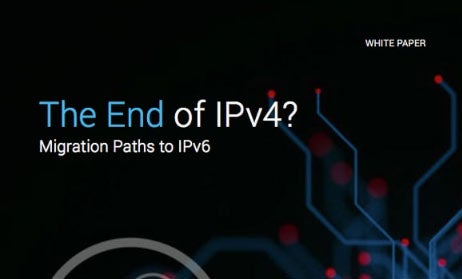Rural Broadband Buildout: From Funding to Security and More

Building a Future-ready Rural Broadband Infrastructure
The push to extend broadband to underserved communities is well underway—and it’s gaining speed. Even before the global pandemic, governments around the world were offering new funding to help operators reach underserved communities and bridge the digital divide. Now, such efforts are seen as all the more critical to mitigate the educational, social, and economic fallout of COVID-19, and to help stimulate the recovery moving forward. Still, there are numerous challenges to be addressed along the way, from deploying new generations of network technology, to ensuring protection against rising threats such as malware, ransomware, and DDoS attacks. Along the way, operators will need to manage the cost and complexity of rapidly evolving broadband infrastructure.
A new report by RCR Wireless News, sponsored by A10 Networks, offers an in-depth exploration of rural broadband today, from business initiatives to the broadband infrastructure through which they’re being enabled. The report covers key considerations for operators seeking to leverage a massive influx of funding during a time of multiple network technology transitions, while keeping a close eye on total cost of ownership (TCO).
A Tidal Wave of Rural Broadband Funding to Close the Digital Divide
Given the scale and importance of the rural broadband buildout, the federal government has made massive amounts of funding available for operators. The report surveys the subsidies already available, as well as those under consideration, for wireline, fixed wireless, and even satellite-based broadband infrastructure and internet services. For example, the Rural Digital Opportunity Fund (RDOF) reverse auction will award $9.23 billion to support the deployment of service tiers ranging from 25/3 Mbps up to gigabit speeds across nearly 5.3 million locations. A coming second phase of RDOF funding will bring the total awarded to $20.4 billion. Additional programs such as the Coronavirus Aid, Relief, and Economic Security (CARES) Act, the American Rescue Plan, and the Treasury Department’s Capital Projects Fund, among others, make provisions for large grants to subsidize operators’ efforts to close the digital divide.
Behind the Scenes at the Leading Edge of Rural Broadband
To offer context and nuance for the issues discussed below, the report offers readers an inside look at three operators leading the deployment of future-ready broadband infrastructure to close the digital divide. At Nsight/Cellcom in the upper Midwest, the infusion of government funding has transformed the economics of fiber-to-the-home (FTTH), though the complexity of day-to-day operations and TCO will always be a challenge. In South Dakota, MidCo carefully balances the business case for build-outs, technology choices, and local geographic challenges to identify the right funding opportunities to pursue. Regional network operator, C Spire, led a consortium of companies including Nokia, Microsoft, and Facebook to develop new enablement models more suitable for rural communities than the typical large-city operator business model.
Fiber, 5G and Virtualization Reshape Networks—and IPv4 to IPv6 Migration Continues
Technology innovation plays a key role in enabling rural broadband connectivity. The rapid expansion of fiber networks (FTTH) will help rural and regional operators meet the demand for speed, capacity, and low latency, provided they can compete effectively with larger carriers for the needed resources and materials. The rollout of 5G networks will enable operators to offer new low-latency, high-value services—including precision agriculture and telemedicine services with particular appeal in rural markets—powered by edge computing architectures. The push into underserved areas will be facilitated in part by efforts such as Open RAN initiatives and the Rural Cloud Initiative, which will help network and application providers serve rural markets more cost-effectively. The report examines each of these shifts in depths, including both their potential impact on the rural broadband market and their operational implications for service providers.
The End of IPv4? Migration Paths to IPv6
Learn about various techniques for IPv6 Migration, IPv4 Preservation and IPv4/IPv6 Translation such as Carrier Grade NAT (CGN/CGNAT).
The transition from IPv4 to IPv6 internet addressing remains an ongoing challenge, as a lack of backward compatibility requires operators to maintain a mixed environment to ensure connectivity for customers and content on both standards. At the same time, the scarcity of available IPv4 addresses forces operators with existing investments in IPv4 broadband infrastructure and limited stocks of IPv4 addresses to support additional subscriber growth in one of two ways: either by acquiring IPv4 address space at a high cost on the open market, or by using carrier-grade NAT (CGNAT), which makes it possible for one public IP address to be shared across multiple subscribers. Solving IPv4 exhaustion while building a path to growing IPv6 adoption will be critical for operators seeking to expand their subscriber base, accommodating a larger number of connected devices per customer.
Rising Network Security Concerns from Ransomware to DDoS
With rapidly expanding and evolving networks, an intensifying threat landscape, and many ISPs and end customers who are relatively new to the world of broadband connectivity, the report highlights security as a top priority for rural broadband operators. Ransomware is rampant in the environment, with large-scale attacks by both cybercriminal gangs and nation-states causing major disruptions across the economy. DDoS attacks have spiked during the COVID-19 pandemic, as hackers take advantage of remote workers and learners lacking the protection of enterprise security. For rural customers to cross the digital divide and benefit from broadband connectivity to connected services, from healthcare, banking, and education to e-commerce and streaming entertainment, operators will need to ensure a safe digital environment.
The RCR Wireless News report, “Building a Future-ready Rural Broadband Infrastructure,” is essential reading for network operators targeting this rich and growing market opportunity. Access the full report.
